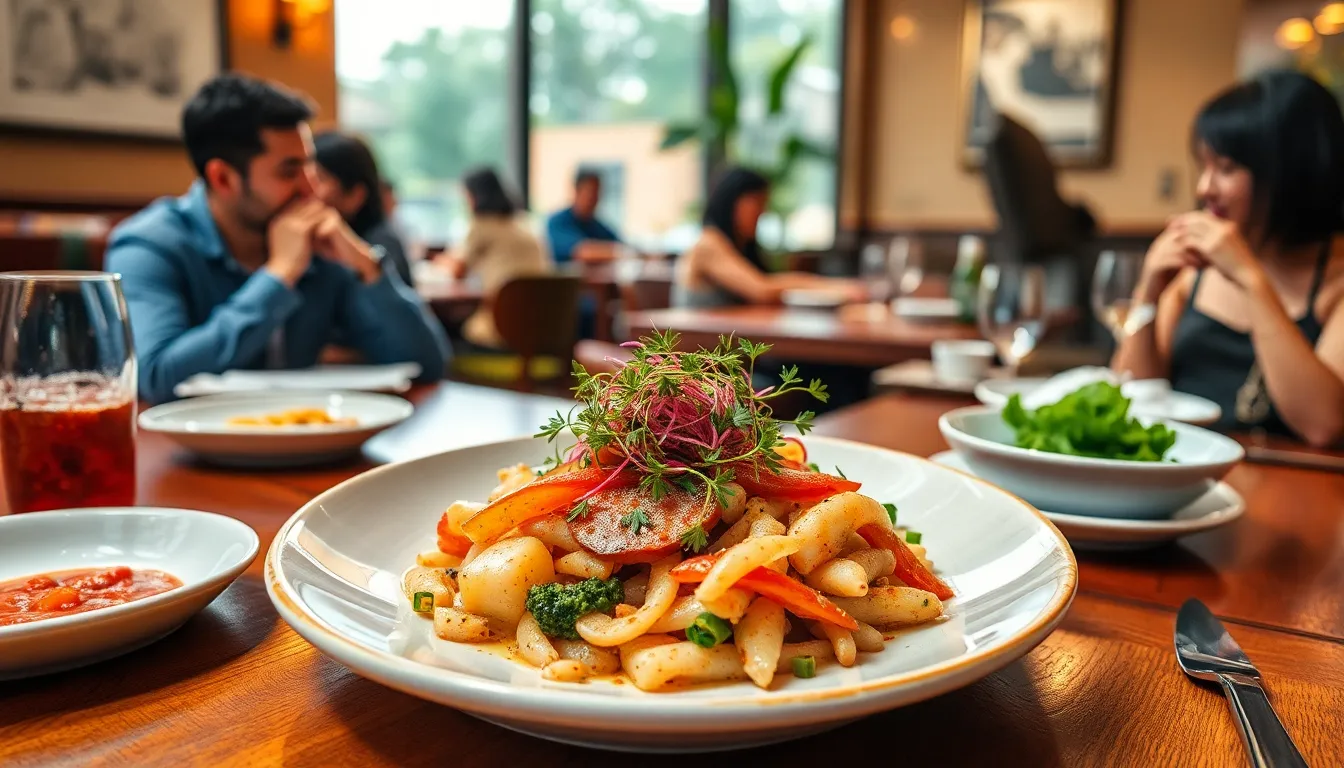Yumkugu Price: Discover What You Should Really Pay for This Trending Dish
In a world where prices can feel as unpredictable as a cat on a hot tin roof, understanding the cost of yumkugu is crucial for savvy shoppers. Whether you’re a seasoned gourmet or just someone who can’t resist a good food trend, knowing what to expect can save both your wallet and your taste buds.
Imagine biting into a delicious yumkugu dish while knowing you didn’t break the bank. That’s the dream, right? With its unique flavors and growing popularity, the price of yumkugu is worth exploring. So buckle up as we dive into the delicious details of yumkugu pricing, ensuring you get the best bang for your buck while enjoying every scrumptious bite.
Yumkugu Price
Contents
Yumkugu pricing varies based on ingredients, preparation methods, and regional popularity. Average costs range from $10 to $30 per serving, with premium versions exceeding this range. For instance, a basic yumkugu dish typically features essential elements and remains budget-friendly, while gourmet versions often include rare ingredients tailored for an upscale dining experience.
Different venues impact prices significantly. Food trucks and casual dining establishments generally offer lower prices compared to fine dining restaurants. Fine dining establishments often charge premiums due to higher quality ingredients and sophisticated presentation.
Portion sizes also influence pricing. Smaller portions, often designed for sharing or sampling, accompany lower price tags, encouraging diners to explore multiple flavors. Larger portions, suited for individual meals, usually come with higher costs reflecting the additional ingredients and labor involved.
Seasonal availability contributes to price fluctuations. During peak seasons, certain ingredients may rise in price, resulting in increased yumkugu costs. Conversely, off-season ingredients often allow for more stable pricing, making it easier for consumers to budget.
Diners should also consider regional variations. Local markets and culinary trends influence yumkugu pricing, with urban areas generally presenting higher costs due to increased demand. Researching local options helps consumers find delicious yet affordable yumkugu choices.
Value-added services can further affect the overall price. Takeout or delivery charges can increase costs, while dining in may offer promotions or bundled deals. Understanding these aspects of yumkugu pricing enables consumers to make informed dining selections without overspending.
Factors Influencing Yumkugu Price

Several factors significantly affect the price of yumkugu. Understanding these elements helps consumers make informed decisions when dining.
Supply and Demand Dynamics
Demand for yumkugu rises during peak dining hours and local food festivals. Increased demand can cause prices to spike in popular restaurants, especially during special events. Conversely, lower demand periods might lead to discounts or specials that attract customers. The availability of ingredients directly impacts pricing as well. When an ingredient becomes scarce, its price climbs, influencing the overall cost of yumkugu. Observing these dynamics helps gauge expected costs and find suitable dining options.
Quality of Ingredients
Prices vary based on the quality of ingredients used in yumkugu preparation. Fresh, organic ingredients usually command a higher price due to their superior taste and health benefits. Chefs often emphasize using local and sustainable sources, enhancing flavor while contributing to cost. Premium ingredients, like specialty meats or imported spices, can drive prices beyond the average range. Opting for establishments that prioritize quality often results in a more rewarding dining experience, offering great value for the price.
Comparison with Similar Products
Yumkugu pricing often contrasts with other popular dishes. Average prices for comparable meals range significantly, typically from $8 to $25. Dish ingredients and preparation styles influence these costs, similar to how they affect yumkugu.
Establishments specializing in fast-casual dining generally offer lower prices than upscale venues. A serving of yumkugu at a food truck might cost around $10, while a five-star restaurant could charge upwards of $30. These price differences often reflect ingredient quality and preparation expertise, essential factors for discerning diners.
Portion sizes also affect comparative pricing. Many casual dining establishments provide smaller portions for sharing, making them more affordable. In contrast, larger individual servings often command premium prices, mirroring trends in yumkugu pricing.
Seasonal ingredient availability leads to fluctuations in prices. When certain ingredients for yumkugu are in season, similar dishes may rise in cost as well. Consumers notice this trend across various cuisine types. Urban areas present higher prices due to competition and demand, impacting yumkugu alongside other local offerings.
Local culinary trends further shape pricing strategies. For instance, dishes like ramen and pho may see price adjustments based on region and current food fads. Specialty items often feature premium ingredients, affecting the overall customer experience and price range.
Understanding these factors enables consumers to make better choices when exploring yumkugu and other dishes. By comparing prices and recognizing influences, diners can find the best value while enjoying their meals.
Market Trends in Yumkugu Pricing
Yumkugu pricing fluctuates based on various market trends. Prices typically range from $10 to $30 per serving, influenced by ingredients and dining venues. Premium options can exceed this average, especially in high-end restaurants where quality and presentation increase costs.
Food trucks often offer lower prices, around $10, making yumkugu accessible for casual diners. Upscale restaurants, in contrast, frequently charge upwards of $30 due to their commitment to high-quality ingredients and exceptional service. Portion sizes also impact pricing; smaller portions meant for sharing are generally cheaper than larger individual servings.
Seasonal demand contributes significantly to price changes for yumkugu. Peak dining hours and food festivals can result in higher costs, while off-peak times may prompt discounts. Ingredient availability further affects prices; scarcity of specific components increases costs, directly influencing the overall price of yumkugu.
Additionally, ingredient quality plays a crucial role. Fresh, organic, and locally sourced items usually command higher prices. Establishments focusing on these ingredients aim to deliver a superior dining experience, justifying the premium price point.
Comparatively, other similar dishes remain in the $8 to $25 range. Fast-casual dining options provide lower prices than upscale venues, reflecting their less elaborate preparation styles. Urban dining scenes often experience higher prices due to increased competition and demand. Culinary trends also shape pricing. For example, dishes like ramen and pho illustrate how regional fads impact prices. By recognizing these trends, consumers can better navigate the yumkugu market and enjoy their dining experiences.
Understanding yumkugu pricing is essential for anyone looking to enjoy this beloved dish without overspending. By considering factors like ingredient quality portion sizes and venue type diners can make informed choices that enhance their experience. Whether opting for a casual food truck or a fine dining restaurant being aware of the price variations helps in finding the best value.
As culinary trends and seasonal availability continue to shape yumkugu prices staying informed allows consumers to navigate the market effectively. This knowledge not only enriches the dining experience but also ensures that every meal is both satisfying and budget-friendly.





